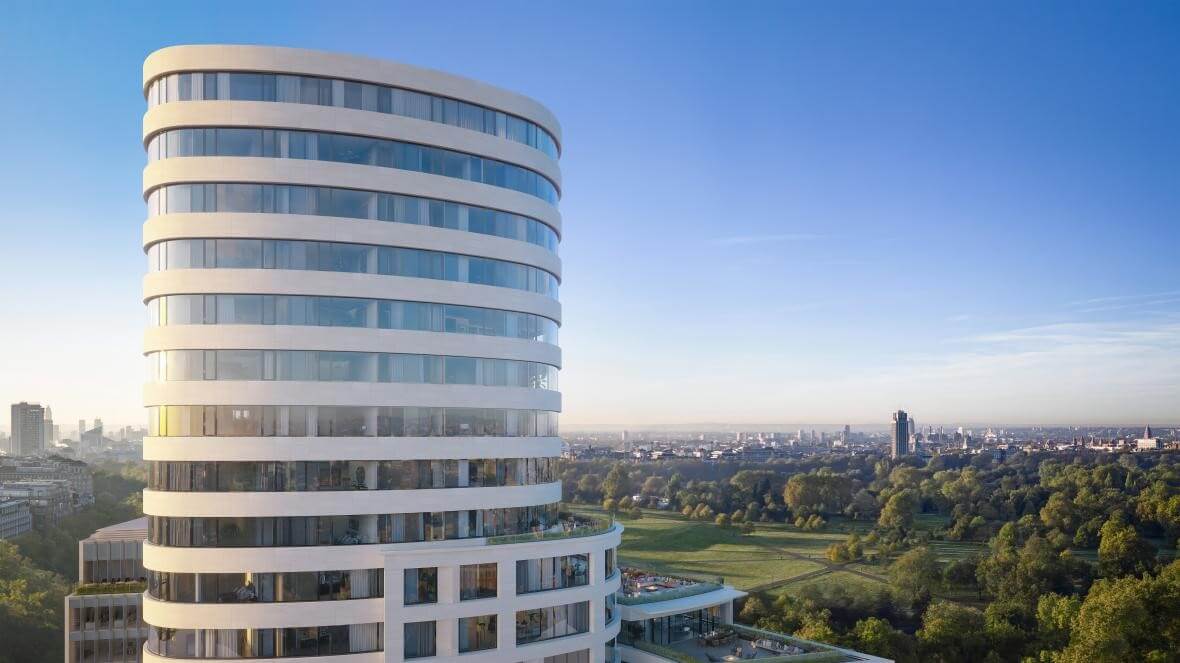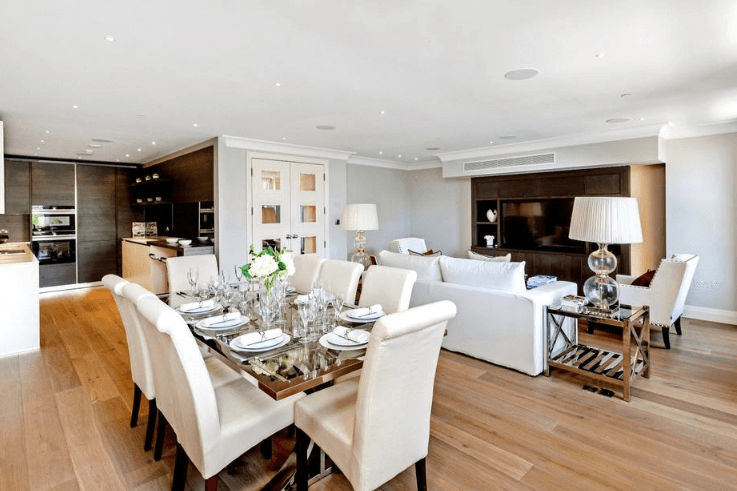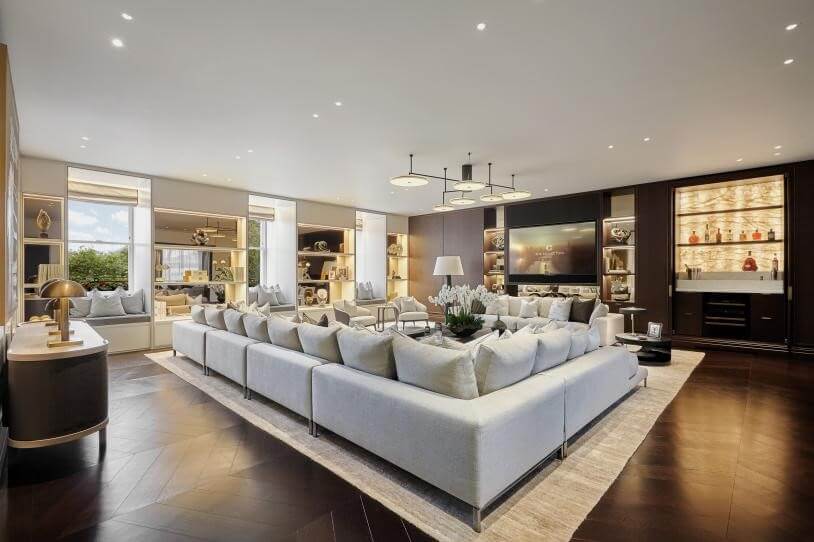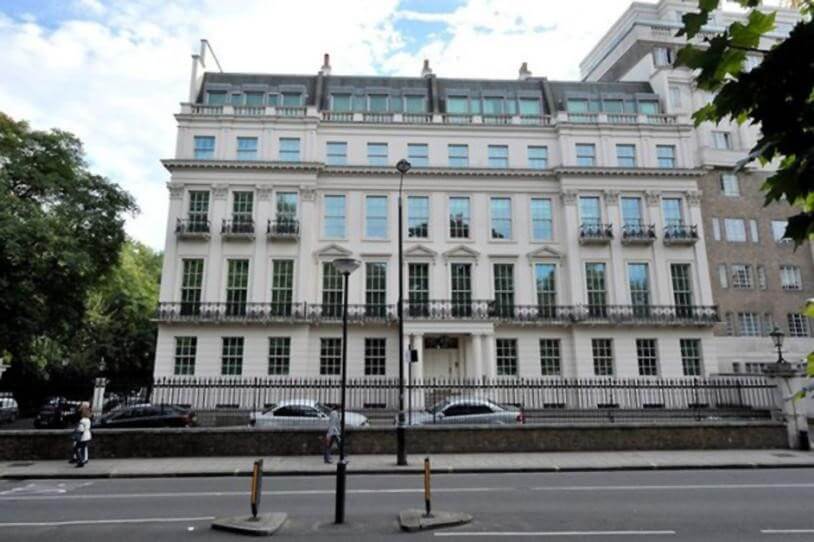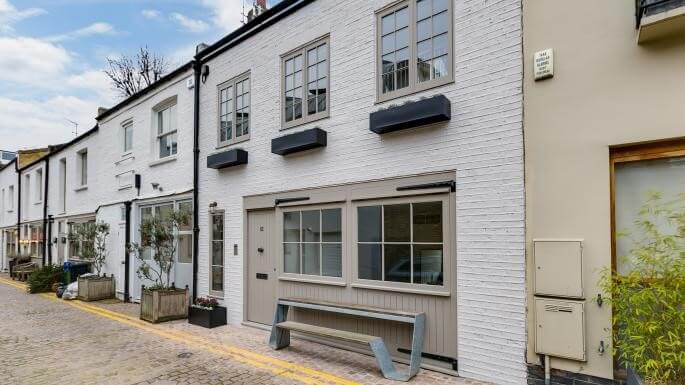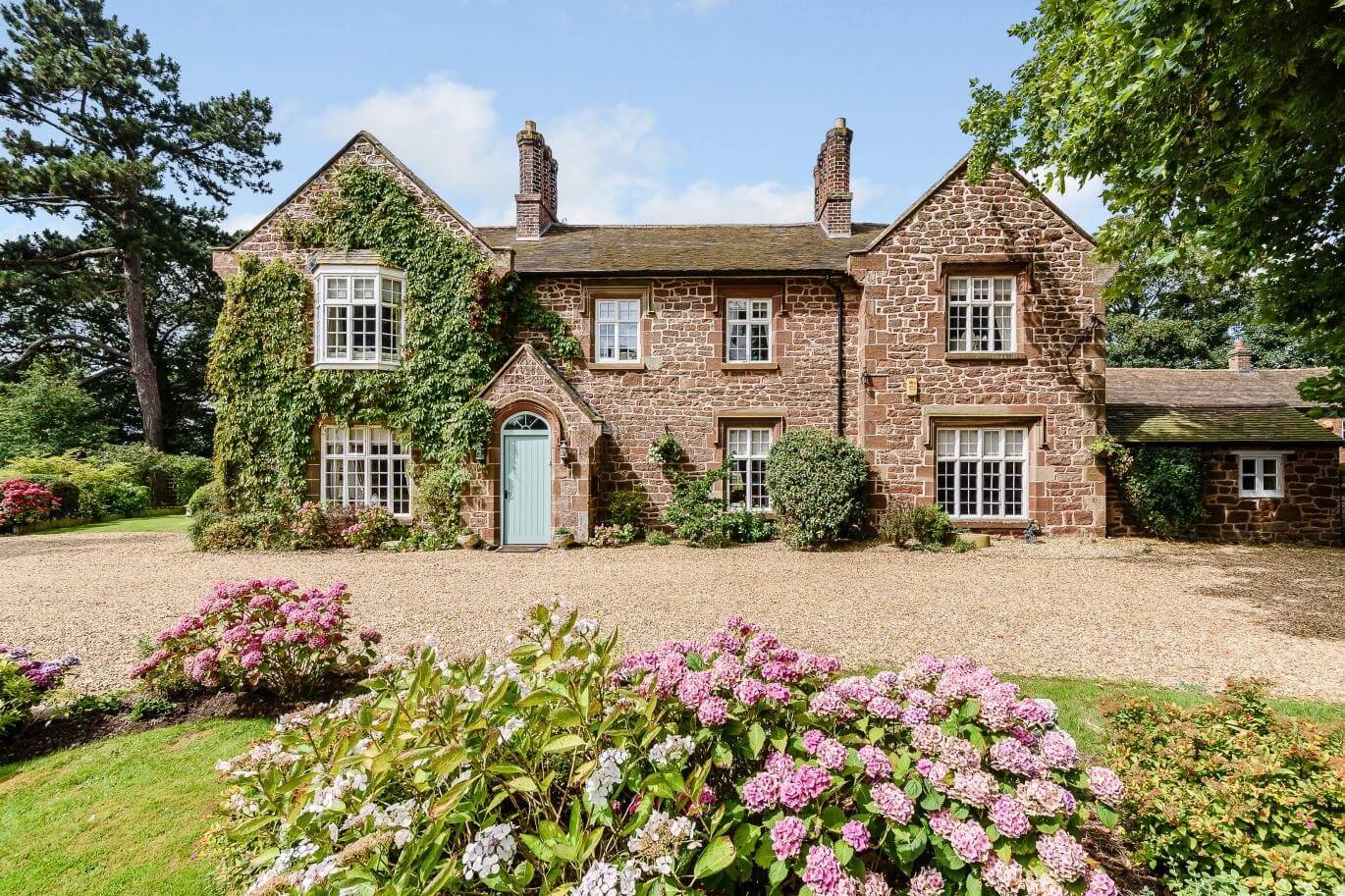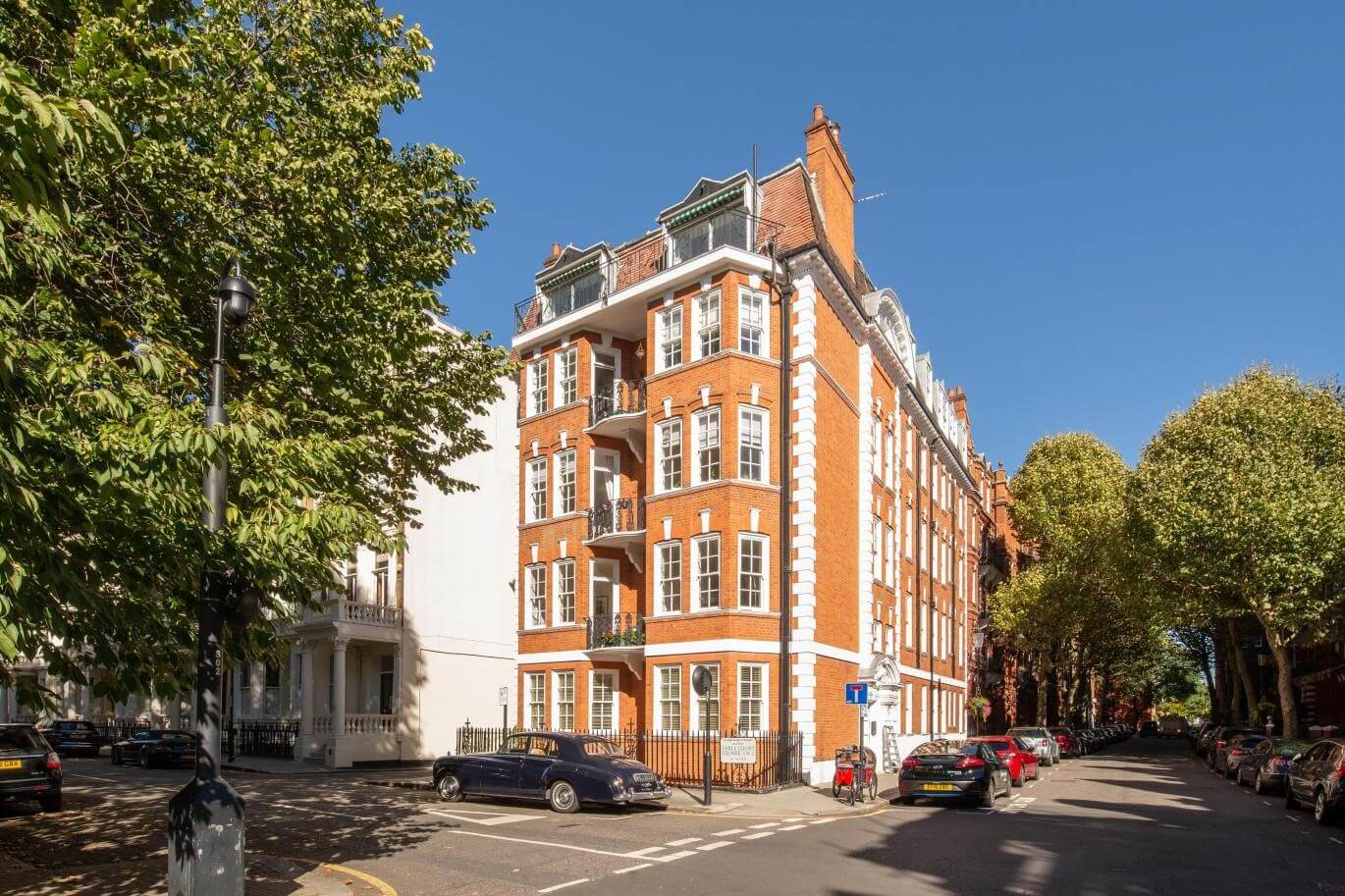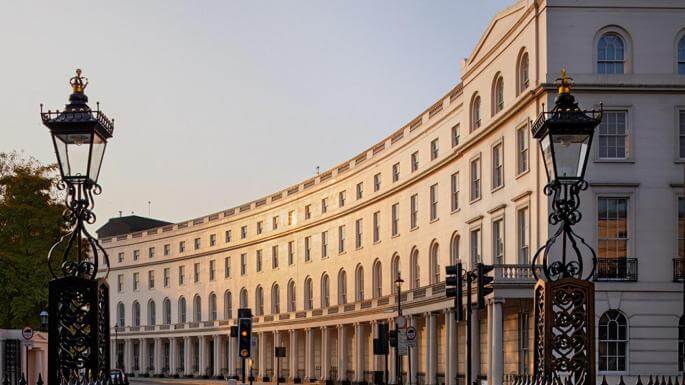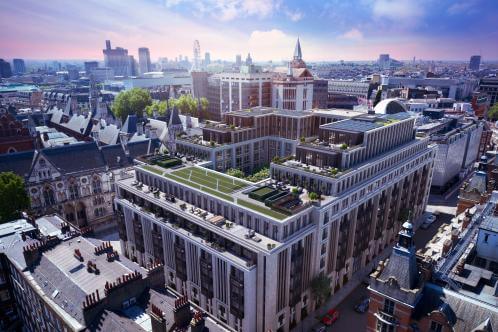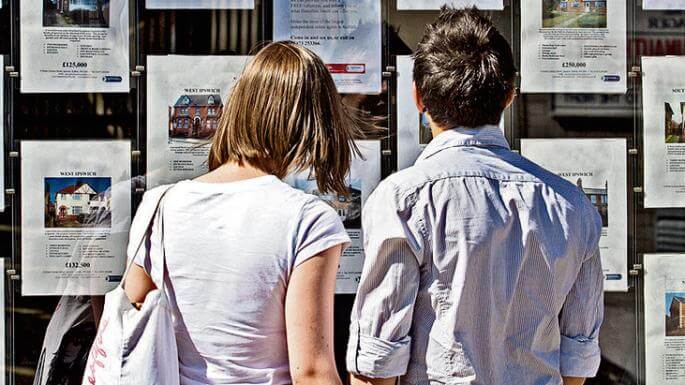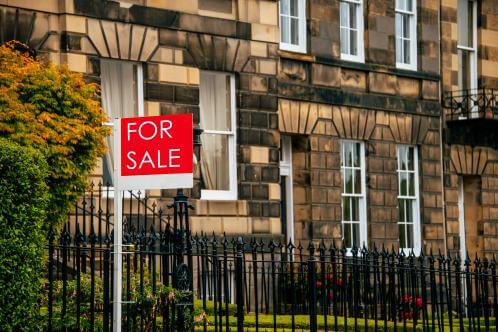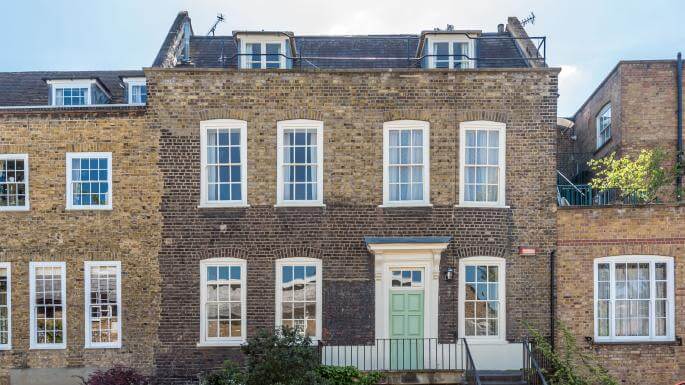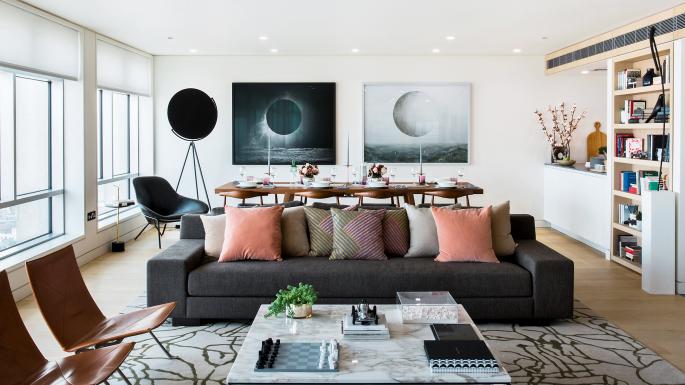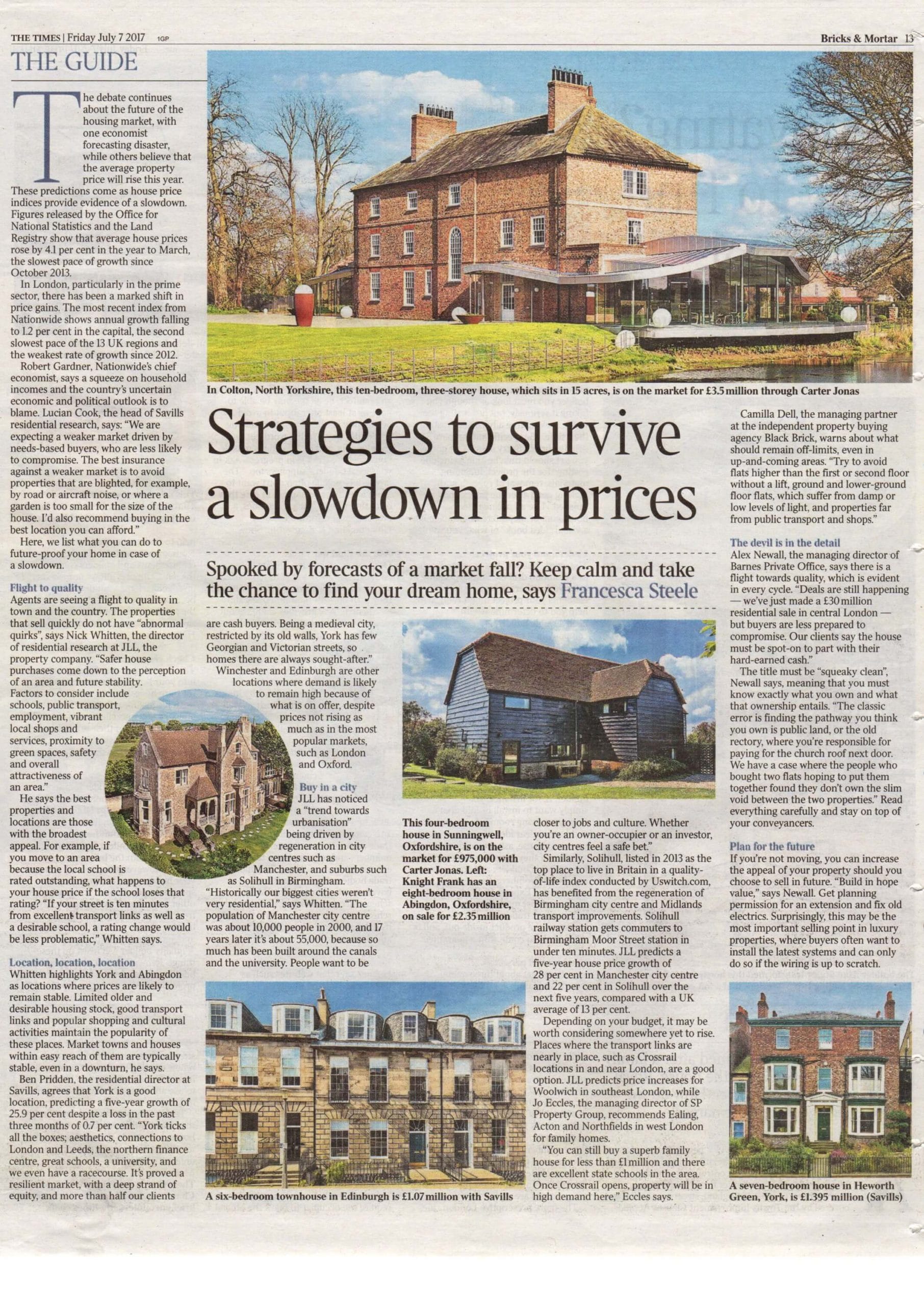By Emanuele Midolo
There are 317 homes over £10 million for sale — the race for super-prime real estate is revving up
London’s super-prime property market is roaring back to life. Overseas buyers are beginning to return and the supply of luxury bricks and mortar is set to be boosted by the launch of luxury developments with multimillion-pound price tags.
A silver Lamborghini with a blue camouflage wrap and a Kuwait registration plate comes gunning into the narrow Mayfair street and parks on a double yellow line next to where Peter Wetherell, the founder of the Mayfair-based estate agency Wetherell, stands. It is a potent symbol of the va-va-voom returning to the capital.
“We should be proud that so many people are flying themselves — and their cars — over just to ride our streets and view our properties,” Wetherell says.
Wealthy Middle Eastern visitors are not just driving their cars, but driving the market and snapping up properties, while Far Eastern purchasers — who for years have led the pack and paid the premium for a central London postcode — are still unable to get here because of travel restrictions.
“Typically, high-net-worth buyers from Hong Kong are the early movers, followed by those from the Middle East,” says Henry Faun, a partner and head of the Middle East project marketing team at the estate agency Knight Frank, who adds that “phones are ringing off the hook”.
With the UAE having come off the government’s red list in early August, Faun says that a year’s worth of pent-up demand is being released. “One of our clients arrived in London recently with £30 million ready to invest. Within two weeks they had made an offer and exchanged on a property.”
Data from Knight Frank shows that demand for London properties is returning to pre-pandemic levels. When it comes to nationalities, homebuyers from the UAE have increased 47 per cent between January and August, compared with the same period in 2019. The estate agency also says sales over the period were up 56 per cent compared with the whole of 2020.
Analysis by the estate agency Hamptons shows that Middle Eastern buyers were the only nationality to increase their share of properties purchased across London since 2019.
Andrew Wishart, a property economist at the consultancy Capital Economics, says: “The real estate sector makes up about 12 per cent of GDP, so overall the sector is very important. But while the price of homes in prime central London is high, the value of prime homes transacted — around £4 billion in 2019 — is just a fraction of the £285 billion in the national market.”
Nonetheless it is a market that fascinates not just those collecting the hefty fees from top-end sales, but also the general public, who see it as a bellwether for the desirability of the capital, if not the country. During the pandemic, while the rest of the country’s property market boomed central London was subdued as domestic buyers fled to the country while international investors stayed at home.
Now though, as travel restrictions ease and vaccination programmes are rolled out, multimillionaires with money to splash are being given plenty of choice thanks to the launch of luxury developments that were delayed by the pandemic. According to figures published by this week by the estate agency Beactive there are 317 properties for sale for £10 million or more in the capital, giving buyers ample opportunity to join a global elite: there are 63 billionaires living in London, the largest concentration in the world outside San Francisco and Hong Kong.
On Monday, the developer Almacantar unveiled its showroom apartment at the Bryanston, a 54-flat ultra-luxury scheme next to Marble Arch and overlooking Hyde Park. The developer will be hoping that state-of-the-art features such as air purification systems will help to lure wealthy buyers to the block, designed by the starchitect Rafael Viñoly, where prices start from £2.4 million. The spacious apartments look out towards One Hyde Park, the original development of choice for Middle Eastern buyers.
Also overlooking Hyde Park is Park Modern, a 57-flat luxury development by Fenton Whelan where prices start at £2.2 million. A spokesman for the developer says growing demand from the Middle East was the reason it launched a roadshow of the scheme in Dubai.
Amenities at both the Bryanston and Park Modern include the now standard concierge, restaurant, café and valet parking, plus wellbeing facilities — a 25m pool, gym, spa, cinema and treatment salon.
Further out in Kensington, Lancer Square — a 36-apartment, three-block multi-use development by the Malaysian developer Bellworth, designed by Squire and Partners — also launched last week with prices beginning at £4.86 million for a two-bedroom flat.
Meanwhile, Christian Candy, of One Hyde Park fame, has a new scheme too: 80 Holland Park, where prices for a two-bedroom flat start at £2.6 million. The 25-apartment development has a 24-hour concierge, underground car parking with electric charging points, a 16.8m pool and a gym.
Despite their high-end facilities, the new breed of luxury developments are more understated than their predecessors. Tastes have changed since the Candy brothers launched One Hyde Park ten years ago and the style now is more pared down and minimalist with white the primary shade, not black.
Nonetheless, Will Watson, the head of London at the buying agency the Buying Solution, says: “The super-luxe London crash pad is definitely having a moment.”
Period flats and houses in Mayfair, Belgravia and Knightsbridge are also selling fast. “We have the most enormous pipeline with over £50 million worth of properties under offer, anything from flats priced at £2 million up to £25 million,” says Camilla Dell, the founder of the buying agency Black Brick.
She says North American buyers are starting to come over too, a strong dollar making London properties more affordable. “The New York market is hotting up and some American buyers might think they’ve missed the boat there and decide to buy here instead,” she says.
An anonymous American entrepreneur bought a £6 million flat in Mayfair through Black Brick just before the pandemic. He says he was not daunted by the stamp duty tax because he was investing for the long term. “In the US, you pay property [wealth] tax every year,” he says. “I’m planning to use the flat for many years to come so I don’t mind paying tax in one go.”
Some Far Eastern investors are making a leap of faith and buying without viewing the properties in person. Agents say these buyers favour trophy assets that are in the £10 million-plus price bracket and new-build properties. One Chinese buyer is rumoured to have recently snapped up an entire block of flats with two ground-floor shops on Mount Street in Mayfair for £45 million.
Not everyone, however, is opting to buy. A growing number of high-net-worth individuals are in the market for luxury rentals and in many cases they are happy to pay several months’ rent in advance to secure the best properties, which in Mayfair would easily amount to many millions of pounds.
“What is often forgotten about Mayfair is that 91 per cent of the properties are flats and that over half of the homes in Mayfair are rented,” says Wetherell, who adds that his agency had twice the number of lettings in the third quarter of this year compared with the previous quarter, renting 26 properties over the past six weeks, most of which were for over the asking price.
Wetherell says renting, even at this level, is the cheaper option as an overseas purchaser buying a £10 million second home would pay £1.614 million in stamp duty. Renting is also more discreet. “If they buy, the information is out. It’s public. With renting no one knows,” he explains.
For years, the ultra-rich have used offshore companies to shield their identities, but through a number of leaks over the years — the Panama Papers, the Paradise Papers and now the Pandora Papers — the names and details of hundreds of heads of governments, businessmen and oligarchs have come out, shining a light on this world of elite transactions.
“[The] rich try to minimise taxes, just like you and I would do, there is nothing illegal in that,” says Gary Hersham, the founder of the prime estate agency Beauchamp Estate, who last year sold the most expensive home in Britain to a Hong Kong billionaire for £210 million. “If they are allowed to avoid paying stamp duty that’s a problem for the government, not for the rich.”
So why would rich people want to spend all that money buying or renting properties in London? “The answer to the question why,” Hersham says, “is always the same: because they can.”


